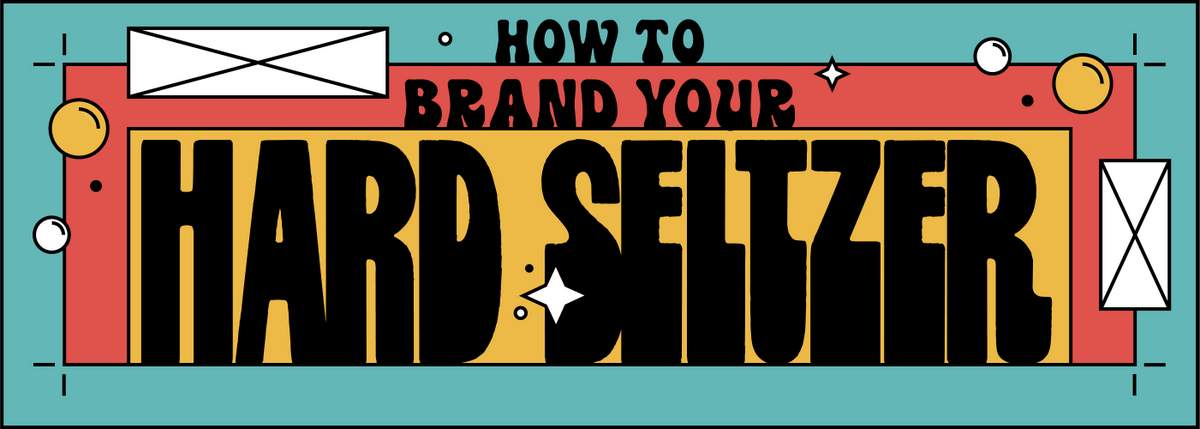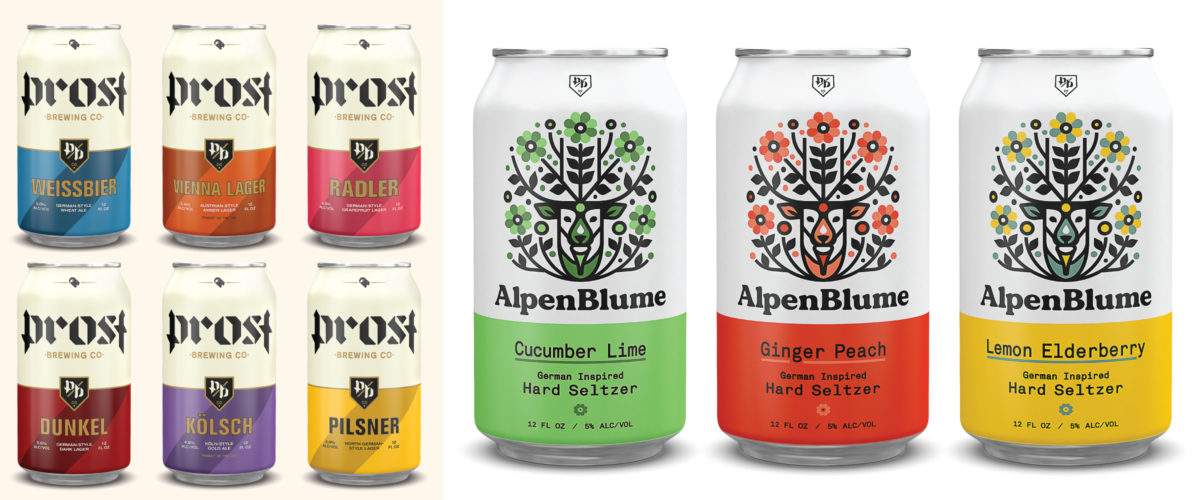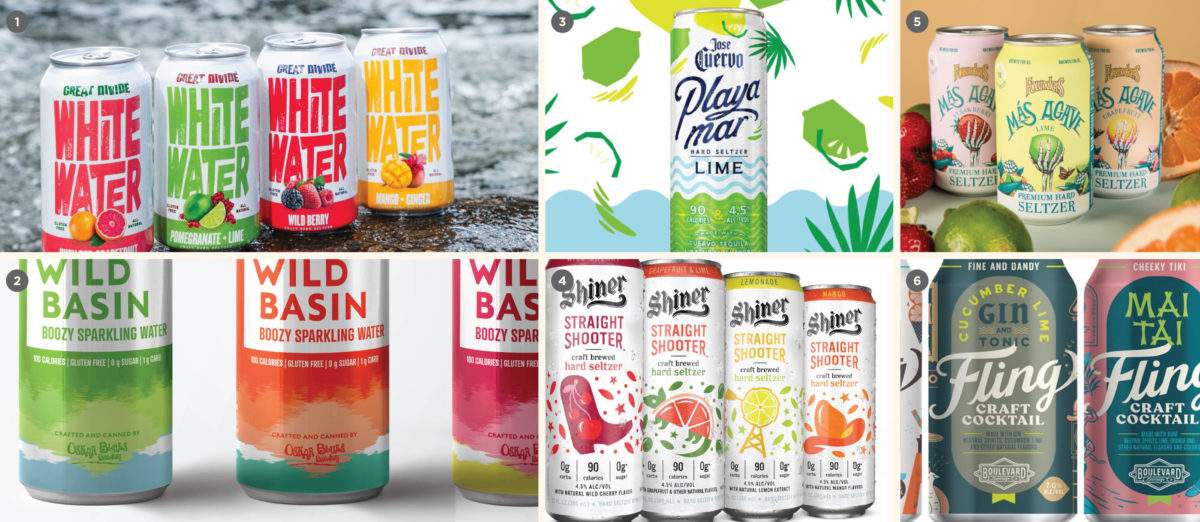This piece was provided by CODO Design, a food and beverage branding firm, and authors of Craft Beer, Rebranded. This book (and companion workbook) is a step-by-step guide to help you map out a successful strategy for rebranding your brewery. Join 5,000+ other brewing industry folks on the Beer Branding Trends newsletter to receive monthly field notes covering trends, currents and actionable advice from the front lines of beer branding.

One of the biggest sea changes we’ve seen in the beer industry over the last few years has been a focus on Brand Architecture. Specifically, moving away from being a single category company (e.g. a brewery) towards being a “house of brands” that offers a diversified portfolio of products in different categories to capture different consumer sets.
In this context, a brewery’s parent brand often falls to the background (or disappears entirely) as it releases non-beer products.
What drove this?
Was it a flattening of the beer category after so many euphoric years of growth? Was it that 8,000th brewery that finally made competition too overwhelming? Was it the rapid spread of COVID-19 that laid waste to every strategic plan in sight? Was it consumer trends shifting abruptly to drink other non-beer beverages, or, less alcohol in general?
Yes.
All of these factors are at play. The biggest trend driving this shift has been the rise of hard seltzer (the first non-beer beverage breweries have moved en masse to produce). But this has accelerated the already in-motion trend of consumers shifting away from beer specifically and toward a variety of other alcoholic (and non-alc) beverages in general. Think RTD cocktails, CBD-infused everything, THC (where legal), kombucha (about to “tip” if not already there), non-alcoholic seltzer, functional beverages and teas. This is what people in the beverage industry (cringingly) call “Share of Throat.”
At an upstream level, this is a conversation about Brand Architecture. Brand Architecture is a framework for determining how all of a company’s products and brands interact with each other. How do specific brands relate or differ, how are they positioned and named, how are they priced, and how does all of this help you build your business?
We’ve had more conversations about brand architecture this year than in our last 11 years of working with breweries. And that’s a good sign that breweries are launching new products with proper forethought and due diligence.
So what does this all mean if you’re thinking about launching a hard seltzer (or other non-beer extension in 2021)?
If you’re thinking about launching an extension in 2021, you need to think about what role these products play in your portfolio and how your current positioning helps, or hinders, their chances for success. Let’s look at 2 examples — the specialist brewery and the generalist, both planning an extension.
Scenario 1. The Specialist Brewery
If you’re an all sour brewery (and renowned for that), producing anything other than sour beers can harm that positioning. You want people to think of your brewery when they want a sour beer. This example can apply toward any brewery that is known for a singular style — lagers, mixed ferm, Belgians, functional better-for-you beers, big stouts, etc.
In this case, it might make sense for the sour brewery to create an entirely new brand, including a name, identity, packaging and website, for this new hard seltzer in order to protect that parent positioning.
You’re clearly business savvy. Congrats! So, we highly suggest you check out our new column curiously called The Beer Flow. It’s all about beer data. Click here!
Scenario 2. The Generalist Brewery
If you’re known as a generalist brewery, you have more flexibility in what you can produce because that’s what people will come to expect. Releasing a Pilsner one week and a Baltic Porter the next are the norm and would, in a way, give you more leeway to release a hard seltzer under your parent brand (because you’re not known for any one thing).
In this case, it could* make sense to launch the hard seltzer under your current brand.
*But even this isn’t always the right choice.
We’ve found that Brand Architecture isn’t black and white. Even when building fancy decision trees and rule sets, a decision should be weighed just as much against your core values, market opportunity, demand, and your parent brand’s positioning.

Trend within the brand architecture trend
Endorsed brands
An “endorsed brand” is one of the most common approaches we’ve seen breweries use to bring new non-beer extensions to market. In this application, there is a fully trademarked product name, branding, packaging, website — everything — but along with a subtle “endorsement” from the parent brand on its packaging.
Why do this?
We view an endorsement as a hedge. With so many hard seltzers (as a specific example) out in the market, if you’re a nationally-distributed brewery with nationally-distributed brewery mindshare, putting your nationally-distributed brewery’s name *somewhere* on that hard seltzer makes a lot of sense.
An endorsed brand leverages your existing brand equity right out of the gate, but it also sets the product up to spin off (or be quietly retired) as needed down the line without dramatically affecting the parent brand.

This is an extremely brief look at this topic. But stay tuned — we’re working on a cool resource aimed at helping breweries manage these complex brand architecture decisions. Join our Beer Branding Trends Newsletter to be the first to know when it’s available.
Join CODO’s Beer Branding Trends newsletter for monthly field notes covering trends, currents and actionable advice from the front lines of beer branding.
The Link LonkApril 27, 2021 at 08:06PM
https://www.craftbrewingbusiness.com/featured/how-to-brand-your-hard-seltzer-navigating-from-brewery-to-beverage-company/
How to brand your hard seltzer, navigating from brewery to beverage company - Craft Brewing Business
https://news.google.com/search?q=hard&hl=en-US&gl=US&ceid=US:en
No comments:
Post a Comment